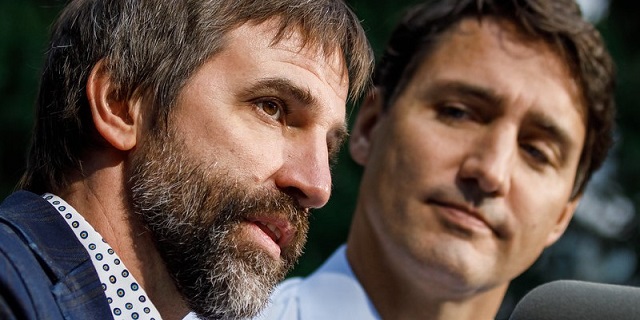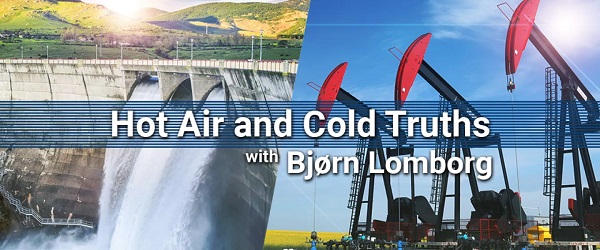Economy
Fixing the Trudeau – Guilbeault Policy Mess May Take Longer Than We’d Like – Here’s Why

From EnergyNow.ca
By Jim Warren
By spring 2024 it was pretty clear the Liberal government was headed for palliative care. A Leger poll on May 25 and an Abacus poll June 10 showed the Conservatives with a 20 point lead over the Liberals.
As the likelihood of their imminent defeat increased, the Trudeau Liberals stepped up the implementation of legislation and regulations inimical to the gas and petroleum industries. Their efforts in 2024 included legislation limiting freedom of speech for companies and individuals who publicize environmental progress in the oil and gas sector (aka Bill C-59). The speech-muzzling measure became law on June 21.
Around the same time, Environment and Climate Change Minister, Steven Guilbeault was busy shepherding two particularly ominous regulatory packages through to finalization. One set of regulations supported Canada’s Clean Electricity Regulations—intended to eliminate the use of coal and natural gas in the production of electricity with staged decommissioning deadlines between 2035 and 2050. The second package finalized the rules for the natural gas and oil industries emissions cap intended to restrict production and growth in those industries, to take effect in 2026.
The regulations weren’t finalized until the month before the House shut down for the holidays, just weeks before Justin Trudeau’s political career was put on life support.
The green policy stampede extended to the international stage. Never mind deficits and debt, the Liberals found plenty of cash to enhance their status as world class environmental luminaries.
At November’s COP29* conference at Baku, Azerbaijan, Guilbeault and Canada’s Ambassador for Climate Change (who knew we had one?), Catherine Stewart signed us on to 15 pledges to take action on fighting climate change. Around half of the promises were merely motherhood and apple pie statements, concessions to the environmentally woke who attend these sorts of international conferences.
But several of the commitments made on our behalf came with price tags. I’m still unclear on exactly which line item in a federal budget, legislative authority or policy statement authorized the spending.
Canada’s COP29 delegation launched the $2 billion GAIA project. Apparently we are cost sharing the project with Mitsubishi. The official government report on the conference doesn’t indicate how much of the $2 billion Canada is kicking in.
Canada also showcased its green bona fides by contributing to the effort to finance the green transition and climate change adaptation in poor countries—a task expected to require developed countries to collectively spend $110 billion to $300 billion per year by 2035. Our delegation announced Canada would lead by example, making a $1billion donation to the effort.
Guilbeault and Stewart gave $10 million to Conservation International’s “Limpopo Transfrontier Conservation Area” project. They “invested” another $2.5 million in the World Wildlife Fund’s “Building Resilient Communities through Marine Conservation in Madagascar” project.
Guilbeault may indeed be angling for that UN job I mentioned in my last EnergyNow column. Read it Here Canada made a $1.25 million payment directly to the office of UN Secretary General, António Guterres. The donation is supposed to assist Guterres in his efforts to encourage countries to get their “Nationally Determined Contributions” handed in on time.
In a podcast conversation with Jordan Peterson several months ago, Danielle Smith noted the accelerated pace of the Liberal government’s announcement and implementation of new environmental policies detrimental to Alberta’s oil and gas sectors and the economies of both Alberta and Canada.
Smith said one of the effects of enacting so many new environmental measures would be to make it extremely difficult for the next government to reverse them all in its first term. This probably was one of the reasons behind the rush to get so much done this past year.
Peterson added a psychological dimension to the discussion. He suggested Guilbeault and Trudeau were behaving like wounded narcissists. They were acting like egomaniacs who recognized their time in office was coming to an end and wanted to do as much as possible in the time they had left to pad their reputations as “do or die” climate warriors. They were striving to guarantee their legacies as planet-saving heroes.
They are probably both right. But Smith’s assessment speaks more directly to the practical challenges a new Conservative government will confront while trying to unwind the morass of legislation and regulations needlessly hampering the growth of environmentally responsible resource development in the west. It is an effort by the outgoing government to make their anti-oil legacy tamper proof.
Simply wading through the legislative quagmire and assessing where reform is most urgent and readily achievable will take time and effort. The wheels of parliament can turn slowly. No doubt some of the bureaucrats employed by the Liberals are true believers—frightened of the “impending climate apocalypse” and unlikely to expedite changes to environmental legislation and regulations. And, there could be multi-year contracts with consultants and other suppliers and long-term funding arrangements with companies and NGOs that will be difficult to unwind.
Let’s not forget the inevitable legal challenges that will threaten to hold up the reform process. Environmental groups and other special interests can be expected to use the courts to block efforts to reverse Liberal government policy. Ideally, the new government will cut off funding support for anti-oil environmental groups. Then at least supporters of the gas and petroleum sectors won’t be sued by activists funded with our tax dollars.
Then there are all the other important things governments are required to do and a limited amount of time to do them—drafting fiscally responsible budgets and dealing with the possibility of US tariffs on our exports come to mind as things near the top of the to-do list.
The highly anticipated Poilievre government may not be able to move as far and fast in reversing the Trudeau-Guilbeault legacy as we might like. They will face immense challenges and should be given a fair bit of slack if they can’t fix everything early in their first term.
*COP stands for Conference of the Parties to the United Nations Framework Convention on Climate Change (UNFCCC). The framework was adopted by the countries attending the UN sponsored Rio Earth Summit held at Rio de Janeiro, Brazil in 1992. The number in COP29 indicates it is the 29th annual post-Rio conference of the parties.
Bjorn Lomborg
Net zero’s cost-benefit ratio is CRAZY high

From the Fraser Institute
The best academic estimates show that over the century, policies to achieve net zero would cost every person on Earth the equivalent of more than CAD $4,000 every year. Of course, most people in poor countries cannot afford anywhere near this. If the cost falls solely on the rich world, the price-tag adds up to almost $30,000 (CAD) per person, per year, over the century.
Canada has made a legal commitment to achieve “net zero” carbon emissions by 2050. Back in 2015, then-Prime Minister Trudeau promised that climate action will “create jobs and economic growth” and the federal government insists it will create a “strong economy.” The truth is that the net zero policy generates vast costs and very little benefit—and Canada would be better off changing direction.
Achieving net zero carbon emissions is far more daunting than politicians have ever admitted. Canada is nowhere near on track. Annual Canadian CO₂ emissions have increased 20 per cent since 1990. In the time that Trudeau was prime minister, fossil fuel energy supply actually increased over 11 per cent. Similarly, the share of fossil fuels in Canada’s total energy supply (not just electricity) increased from 75 per cent in 2015 to 77 per cent in 2023.
Over the same period, the switch from coal to gas, and a tiny 0.4 percentage point increase in the energy from solar and wind, has reduced annual CO₂ emissions by less than three per cent. On that trend, getting to zero won’t take 25 years as the Liberal government promised, but more than 160 years. One study shows that the government’s current plan which won’t even reach net-zero will cost Canada a quarter of a million jobs, seven per cent lower GDP and wages on average $8,000 lower.
Globally, achieving net-zero will be even harder. Remember, Canada makes up about 1.5 per cent of global CO₂ emissions, and while Canada is already rich with plenty of energy, the world’s poor want much more energy.
In order to achieve global net-zero by 2050, by 2030 we would already need to achieve the equivalent of removing the combined emissions of China and the United States — every year. This is in the realm of science fiction.
The painful Covid lockdowns of 2020 only reduced global emissions by about six per cent. To achieve net zero, the UN points out that we would need to have doubled those reductions in 2021, tripled them in 2022, quadrupled them in 2023, and so on. This year they would need to be sextupled, and by 2030 increased 11-fold. So far, the world hasn’t even managed to start reducing global carbon emissions, which last year hit a new record.
Data from both the International Energy Agency and the US Energy Information Administration give added cause for skepticism. Both organizations foresee the world getting more energy from renewables: an increase from today’s 16 per cent to between one-quarter to one-third of all primary energy by 2050. But that is far from a transition. On an optimistically linear trend, this means we’re a century or two away from achieving 100 percent renewables.
Politicians like to blithely suggest the shift away from fossil fuels isn’t unprecedented, because in the past we transitioned from wood to coal, from coal to oil, and from oil to gas. The truth is, humanity hasn’t made a real energy transition even once. Coal didn’t replace wood but mostly added to global energy, just like oil and gas have added further additional energy. As in the past, solar and wind are now mostly adding to our global energy output, rather than replacing fossil fuels.
Indeed, it’s worth remembering that even after two centuries, humanity’s transition away from wood is not over. More than two billion mostly poor people still depend on wood for cooking and heating, and it still provides about 5 per cent of global energy.
Like Canada, the world remains fossil fuel-based, as it delivers more than four-fifths of energy. Over the last half century, our dependence has declined only slightly from 87 per cent to 82 per cent, but in absolute terms we have increased our fossil fuel use by more than 150 per cent. On the trajectory since 1971, we will reach zero fossil fuel use some nine centuries from now, and even the fastest period of recent decline from 2014 would see us taking over three centuries.
Global warming will create more problems than benefits, so achieving net-zero would see real benefits. Over the century, the average person would experience benefits worth $700 (CAD) each year.
But net zero policies will be much more expensive. The best academic estimates show that over the century, policies to achieve net zero would cost every person on Earth the equivalent of more than CAD $4,000 every year. Of course, most people in poor countries cannot afford anywhere near this. If the cost falls solely on the rich world, the price-tag adds up to almost $30,000 (CAD) per person, per year, over the century.
Every year over the 21st century, costs would vastly outweigh benefits, and global costs would exceed benefits by over CAD 32 trillion each year.
We would see much higher transport costs, higher electricity costs, higher heating and cooling costs and — as businesses would also have to pay for all this — drastic increases in the price of food and all other necessities. Just one example: net-zero targets would likely increase gas costs some two-to-four times even by 2030, costing consumers up to $US52.6 trillion. All that makes it a policy that just doesn’t make sense—for Canada and for the world.
2025 Federal Election
POLL: Canadians want spending cuts

 By Gage Haubrich
By Gage Haubrich
The Canadian Taxpayers Federation released Leger polling showing Canadians want the federal government to cut spending and shrink the size and cost of the bureaucracy.
“The poll shows most Canadians want the federal government to cut spending,” said Gage Haubrich, CTF Prairie Director. “Canadians know they pay too much tax because the government wastes too much money.”
Between 2019 and 2024, federal government spending increased 26 per cent even after accounting for inflation. Leger asked Canadians what they think should happen to federal government spending in the next five years. Results of the poll show:
- 43 per cent say reduce spending
- 20 per cent say increase spending
- 16 per cent say maintain spending
- 20 per cent don’t know
The federal government added 108,000 bureaucrats and increased the cost of the bureaucracy 73 per cent since 2016. Leger asked Canadians what they think should happen to the size and cost of the federal bureaucracy. Results of the poll show:
- 53 per cent say reduce
- 24 per cent say maintain
- 4 per cent say increase
- 19 per cent don’t know
Liberal Leader Mark Carney promised to “balance the operating budget in three years.” Leger asked Canadians if they believed Carney’s promise to balance the budget. Results of the poll show:
- 58 per cent are skeptical
- 32 per cent are confident
- 10 per cent don’t know
“Any politician that wants to fix the budget and cut taxes will need to shrink the size and cost of Ottawa’s bloated bureaucracy,” Haubrich said. “The polls show Canadians want to put the federal government on a diet and they won’t trust promises about balancing the budget unless politicians present credible plans.”
-

 2025 Federal Election20 hours ago
2025 Federal Election20 hours agoOttawa Confirms China interfering with 2025 federal election: Beijing Seeks to Block Joe Tay’s Election
-

 Energy1 day ago
Energy1 day agoIndigenous-led Projects Hold Key To Canada’s Energy Future
-

 Energy2 days ago
Energy2 days agoMany Canadians—and many Albertans—live in energy poverty
-

 Business2 days ago
Business2 days agoCanada Urgently Needs A Watchdog For Government Waste
-

 2025 Federal Election19 hours ago
2025 Federal Election19 hours agoHow Canada’s Mainstream Media Lost the Public Trust
-

 International2 days ago
International2 days agoPope Francis has died aged 88
-

 2025 Federal Election19 hours ago
2025 Federal Election19 hours agoReal Homes vs. Modular Shoeboxes: The Housing Battle Between Poilievre and Carney
-

 2025 Federal Election9 hours ago
2025 Federal Election9 hours agoBREAKING: THE FEDERAL BRIEF THAT SHOULD SINK CARNEY






